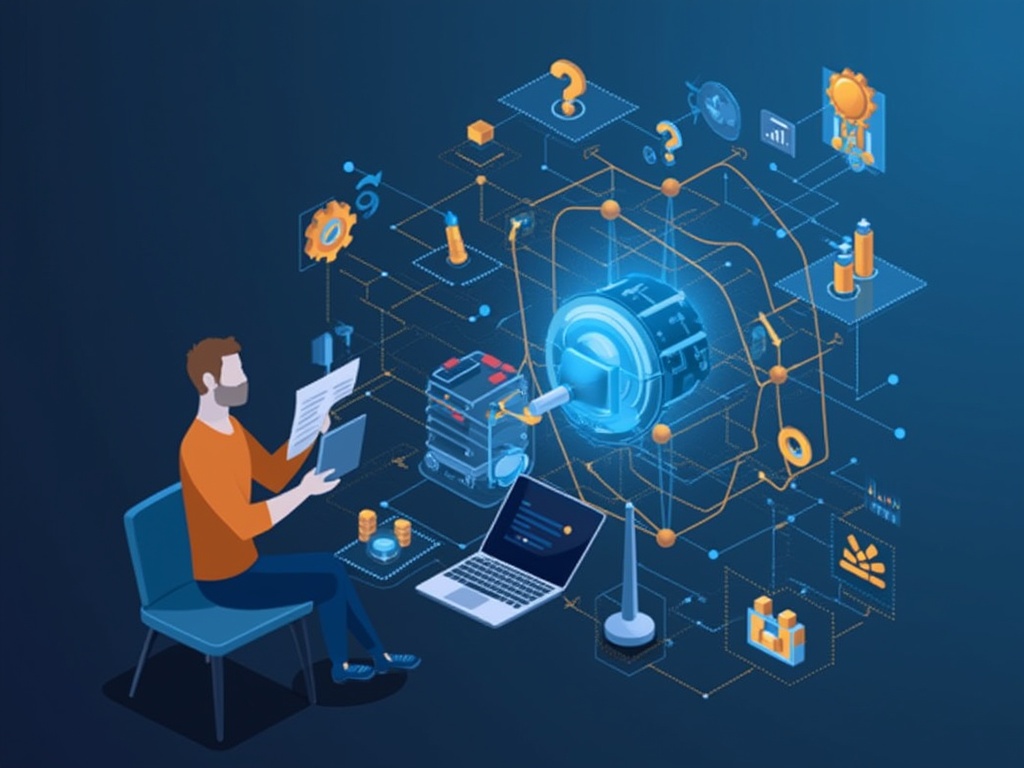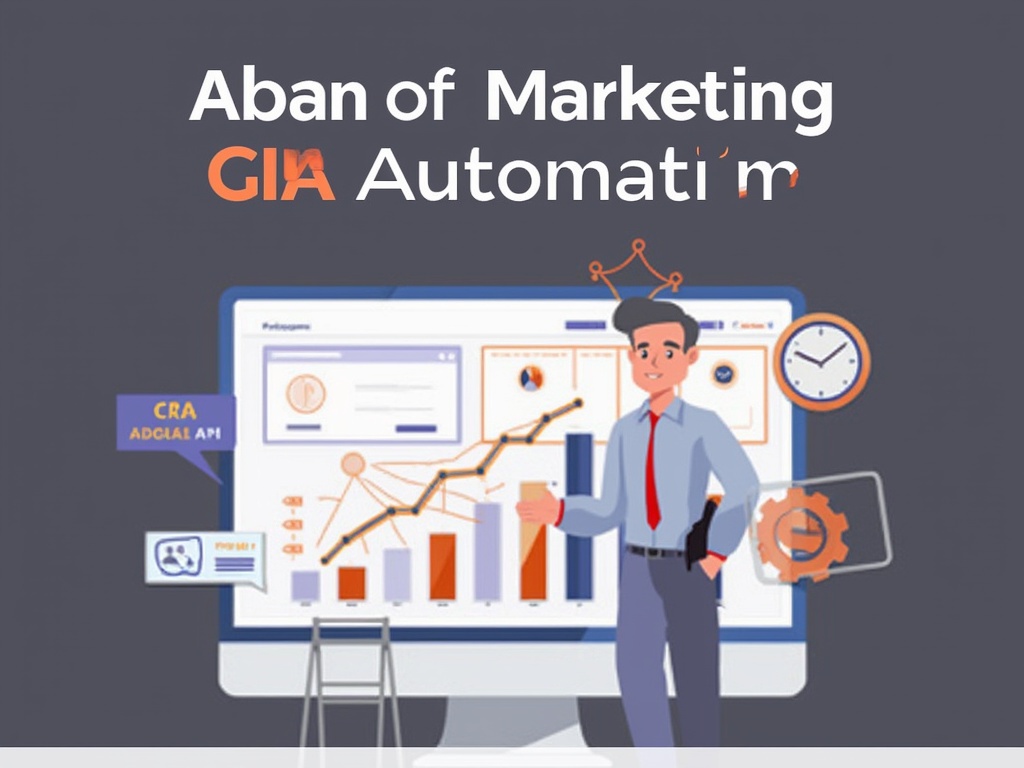Marketing automation has transformed business operations, with 79% of companies seeing revenue growth after implementing automation tools. Teams save an average of 6.5 hours weekly by eliminating manual, repetitive tasks. Advanced automation systems leverage AI technology to create personalized customer experiences, letting businesses expand their marketing reach while maintaining personal connections through smart analytics and targeted segmentation.
Key Takeaways:
- Automation converts time-consuming manual work into efficient processes, freeing marketing teams to concentrate on strategy and creative initiatives
- Ready-to-use templates provide immediate solutions across multiple industries including real estate, healthcare, e-commerce, and financial services
- Direct integration with CRM data powers personalized engagement while preserving authentic customer relationships
- Performance tracking should target specific metrics like click-through rates, lead scoring precision, and customer acquisition expenses
- AI capabilities enhance automation through predictive analysis, natural language processing, and self-learning campaigns that consistently improve results
The Secret Recipe: How Marketing Automation Changes Everything
Proven Impact on Business Growth
Marketing automation delivers clear financial benefits. According to HubSpot’s latest research, 79% of companies see revenue growth after adding automation tools to their marketing mix. I’ve found that automated systems reduce the daily grind of repetitive tasks, saving teams an average of 6.5 hours each week.
Here’s how automation transforms marketing operations:
- Instant lead scoring and qualification
- Automated email sequences based on customer behavior
- Scheduled social media posts across multiple platforms
- Personalized content delivery at scale
- Real-time performance tracking and reporting
These automation tools turn manual, time-consuming processes into streamlined operations. By removing repetitive tasks, marketing teams can focus on strategy and creative work. The switch from manual to automated processes isn’t just about efficiency – it’s about creating consistent, personalized customer experiences that drive results.

Industry-Specific Templates: Your Fast Track to Success
Ready-Made Solutions for Every Sector
GoHighLevel’s snapshot templates make automated marketing simple across multiple industries. I’ve found these pre-built solutions perfect for businesses wanting quick implementation without starting from scratch. Each template includes custom sales funnels and workflows that match specific industry needs.
Template Highlights by Industry
The platform offers specialized templates for key sectors. Here’s what you’ll find:
- Real Estate: Lead capture forms, property listing automations, and client follow-up sequences
- Healthcare: Patient scheduling systems and HIPAA-compliant communication flows
- E-commerce: Product launch funnels and abandoned cart recovery campaigns
- Financial Services: Investment consultation bookings and loan application processes
These templates connect smoothly with your current tools, letting you maintain existing processes while adding automation. Each template can be modified to fit your unique business requirements, giving you the foundation for rapid growth.

Building the Perfect Automation System
Creating Your Automation Framework
I recommend starting your automation journey with precise trigger points in your customer’s path. Set up action-based triggers that respond to specific customer behaviors like email opens, website visits, or purchase history. These triggers form the backbone of your automated marketing system.
Here’s what you need to include in your automation framework:
- Email sequence triggers based on subscriber actions
- Purchase follow-up messages that trigger after specific buying behaviors
- Lead scoring rules that automatically qualify prospects
- Social media post scheduling linked to your email campaigns
- Customer service responses for common inquiries
Your automation system should connect with your current marketing tools. Link your CRM to your email platform, connect your social media scheduler, and sync your analytics tools. This creates a smooth flow of data and ensures your marketing efforts work together instead of in isolation.
Maximizing Customer Relationships Through Automation
Smart Personalization with CRM Data
I’ve found that personalization drives customer engagement to new heights. By tapping into CRM data, you can create messages that resonate with individual customers. This starts with segmenting your audience based on their behaviors, preferences, and past interactions. Your marketing messages should adapt to each customer’s journey stage, from initial contact to post-purchase support.
Building Engagement Through Automated Systems
Automated systems make relationship building more efficient and consistent. Here are key automation strategies that boost customer connections:
- Set up triggered email sequences based on specific customer actions
- Create personalized product recommendations using purchase history
- Schedule regular feedback surveys after key interactions
- Launch re-engagement campaigns for inactive customers
- Implement lead scoring to prioritize high-potential prospects
- Deploy automated welcome series for new subscribers
These automated touches keep your brand top-of-mind while maintaining a personal feel. I recommend starting with one or two automation sequences and expanding based on results. The key is to balance automation with authentic engagement – your messages should still sound human, even when delivered automatically.
By focusing on these automated relationship-building strategies, you’ll create stronger customer connections while saving time and resources. The goal is to make each customer feel valued through personalized interactions, even as your business scales.
Measuring Success: Analytics and Optimization
Essential Performance Metrics
Marketing automation success depends on tracking the right metrics. I focus on several key performance indicators that directly impact your bottom line:
- Click-through rates across automated email campaigns
- Lead scoring accuracy and qualification rates
- Campaign engagement levels across channels
- Customer acquisition costs through automated funnels
- Time saved on repetitive marketing tasks
Testing and Optimization Tactics
A/B testing serves as a powerful tool to refine your automated marketing efforts. Start by testing one element at a time in your campaigns – from subject lines to call-to-action buttons. This focused approach helps pinpoint exactly what drives better results.
Your conversion optimization strategy should center on data-driven decisions. Monitor user behavior patterns to identify where leads drop off in your funnel. Make incremental improvements based on these insights. Common areas for optimization include:
- Email send times and frequencies
- Landing page layouts and messaging
- Lead magnet offers and delivery methods
- Form field optimization
- Call-to-action placement and design
Regular analysis of these metrics lets you adjust campaigns in real-time. Look for trends in engagement rates and conversion data to spot opportunities for improvement. Remember that optimization is an ongoing process – small, consistent improvements add up to significant gains over time.
The Future of Marketing: Your Automated Edge
AI-Powered Marketing Evolution
Marketing automation has shifted from basic email sequences to sophisticated AI-driven systems. Modern platforms can predict customer behaviors and personalize content in real-time. Machine learning algorithms analyze past campaigns, customer interactions, and market data to optimize future marketing decisions automatically.
Smart Technology Integration
I’ve identified key technological advances reshaping automated marketing strategies. Here are the primary developments changing how businesses connect with customers:
- Predictive analytics tools that forecast customer lifetime value and churn risk
- Natural language processing for automated content creation and optimization
- Smart segmentation systems that create dynamic customer groups
- Cross-channel automation that maintains consistent messaging
- Self-optimizing ad campaigns that adjust budgets and targeting
These technologies scale marketing efforts without sacrificing personalization. Marketing teams can now handle larger audiences while maintaining individual customer attention through automated processes. The rise of machine learning means campaigns improve automatically over time, learning from each interaction to refine targeting and messaging strategies. Smart chatbots handle customer inquiries 24/7, while automated A/B testing continuously optimizes landing pages and email campaigns. This combination of AI and automation creates a marketing system that works smarter, not harder, adapting to changing customer needs while maintaining consistent brand messaging across all channels.

Sources:
Salesforce
GoHighLevel
HubSpot
Marketo

